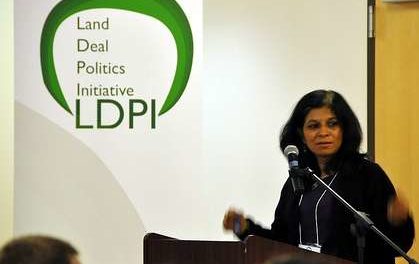By: Kristine Mae Quiray, Institute for Popular Democracy and Mary Ann Manahan, Focus on the Global South*
Context
Forty-seven percent of the Philippine population or about seven million households rely on small-scale water service providers, i.e. water systems managed by users or communities. Only 16 percent of the entire population is covered by water districts or central water utilities, 12 percent by the private concessionaires of the Metropolitan Waterworks and Sewerage System (MWSS) in the National Capital Region and environs, two percent by other providers, and the remaining twenty –three percent rely on other unsafe and unsustainable sources (e.g. dug well, spring and lake river).
In Metro Manila and neighboring provinces such as Rizal, the government water utility corporation, MWSS, is in charge of managing water and sanitation services. However, two large investor-owned companies manage actual operation of water services—Manila Water Corporation, Inc. (MWCI) and Maynilad Water Services, Inc. (MWSI), under a concession agreement with the MWSS. Fifteen years after government privatized the water sector, the private sector, as exemplified by the case of these two companies, have not succeeded to provide universal coverage and direct water connections to poor communities within and along the peripheries of their service areas. Legal, technical and financial constraints such as land tenure issues, leakage, theft, and collection problems are some of the major concerns faced by the two concessionaires.
Outside Metro Manila, there are around 600 operational water districts, which are government corporations supervised and financed by the Local Water Utilities Administration (LWUA). LWUA is a specialized public lending institution created to promote, develop and finance local water utilities. Water districts, which are centralized water utilities in the Philippines, mainly serve the towns and cities outside Metro Manila. In addition, there are 1,200 water systems operated by municipal governments. Almost half of the water utilities, especially the LGU-ran, are non-operational due to financial constraints. Rural areas not covered by the water districts and municipal water are served by rural water service associations (RWSAs), barangay water service associations (BWSAs) or village-level water systems, and water service cooperatives, or not served at all.
Without Level 3, individual metered connections to households, poor families face inordinately high costs, procuring water at 35 pesos per drum or 175 pesos (more or less USD 4) per cubic meter. This is ten times more than what it costs for those with regular connections. Also households, especially women and children members, spend longer queue time and distance in fetching water from vendors.
Central water utilities (water districts, LGU-operated water systems, and the two large private companies) are not always willing to spend on service coverage in poor communities due to risks (theft, pilferage, payment defaults) that they cannot handle. Aggravating the problem is the failure and sometimes, refusal of local government units (LGUs) to take on new roles to address waterlessness, even though they see significant gaps in service provision by central utilities. There is an overlap in the mandates of central utilities (the water districts and the private water concessionaires) and LGUs, with LGUs taking on an unspecified residual role. This means that LGUs generally and mistakenly presume that they are no longer accountable for water services if there is already a water district or a privateconcessionaire in the area of their jurisdiction.
This is a clear governance gap that directly leads to the local government’s inaction and non-improvement of service provision. These gaps in governance and the lack of service improvement can, however, be addressed by specifying the division of labor between communities, villages, municipalities and central water utilities.
New roles for communities
The failure or inability of central utilities to connect outlying areas and poor communities within their service areas led to the emergence of community water providers ran by cooperatives and associations. Communities organized as water service cooperatives and associations or “associative water systems” have been able to assume the responsibilities of these central water utilities and have proven to effectively provide water to their own people.
Associative and/or community-operated water systems open a window for the development of solutions on how central utilities may achieve near universal service coverage as mandated by their respective charters and contracts. In fact, experiences of a number of urban poor communities in Metro Manila and outlying peri-urban areas show that domestic water can be viably supplied by service providers organized as consumers (or customer-owned utilities), most of which are legally registered either as cooperatives or associations.
As cooperatives (co-op) or associations, the organization of consumers facilitates and secures dependable water supply:
(1) by reducing the cost of transactions either with third party bulk water supply providers or with sources of capital to build consumer-owned water supply capacity and distribution systems, and
(2) by reducing the costs of managing the water system and enforcement of consumer subscription rules (thou shall not steal water) through democratic control and peer monitoring that are inherent in cooperative and associative organizations.
As owners, the associated consumers control the water utility and appropriate the residual income or surplus. This control can be “intimate” or informal in small communities or “formal” as in larger co-ops. The governance mechanism of co-ops includes elected boards that set actual policies. At the same time, members receive earnings in proportion to their patronage, aside from the normal rate paid on their share capital. Co-op members vote on the business plan, including all major decisions in investment, service coverage, and tariffs.
Moreover, cooperatives mitigate the costs of water tariff regulations as well as of health and sanitation through self-regulation by the co-op members themselves. Experience in Metro Manila further shows that associative water systems have been able to actually reduce the costs of transactions and build a stable environment that has in turn enabled MWSS concessionaires to supply to previously waterless urban poor communities, and at a cost lower than what consumers previously paid when supply was delivered by inefficient methods using delivery trucks and ground water pumps in critical watersheds.
* Kristine Mae Quiray is a research associate with the Institute for Popular Democracy (IPD). She works on local governance, water service provision and cooperative development in the Philippines. She maybe reached at [email protected].
Mary Ann Manahan is a program officer with Focus on the Global South (Focus). Based in the Philippines, she works on the commons, agrarian reform and poverty issues. She maybe reached at[email protected].
About the Video: Patak-Patak (Drop by Drop)
The video highlights the innovative role that communities in waterless areas in the Philippines play. With examples from two communities in the National Capital Region or Metro Manila, where service provision is provided by two private concessionaires, Patak-Patak shows how communities organize and help themselves when both government and private water fail to provide water to the poor.
By securing dependable water supply from third party bulk water supplier, the cooperative or consumer-owned water utilities establish mechanisms to ensure that water services remain in the public domain or under community control. Through the cooperative, democratic control and peer-level monitoring and enforcement of rules in the establishment of improved water supply and distribution systems were ensured. Communities also take on roles in financing water services.
Patak-Patak offers a critical insight on the positive role that communities play in bridging the gap in water service provision in the Philippines. These associative water systems are clearly charting new paths and options for the Philippine’s waterless population. They highlight the necessity and urgency for an enabling institutional and policy environment that will allow for such alternatives to develop and flourish.
The video is produced by the Institute for Popular Democracy, Focus on the Global South and the Reclaiming Public Water. The video can be viewed/ accessed at http://blip.tv/focusweb/patak-patak-5962046.







![[IN PHOTOS] In Defense of Human Rights and Dignity Movement (iDEFEND) Mobilization on the fourth State of the Nation Address (SONA) of Ferdinand Marcos, Jr.](https://focusweb.org/wp-content/uploads/2025/07/1-150x150.jpg)

